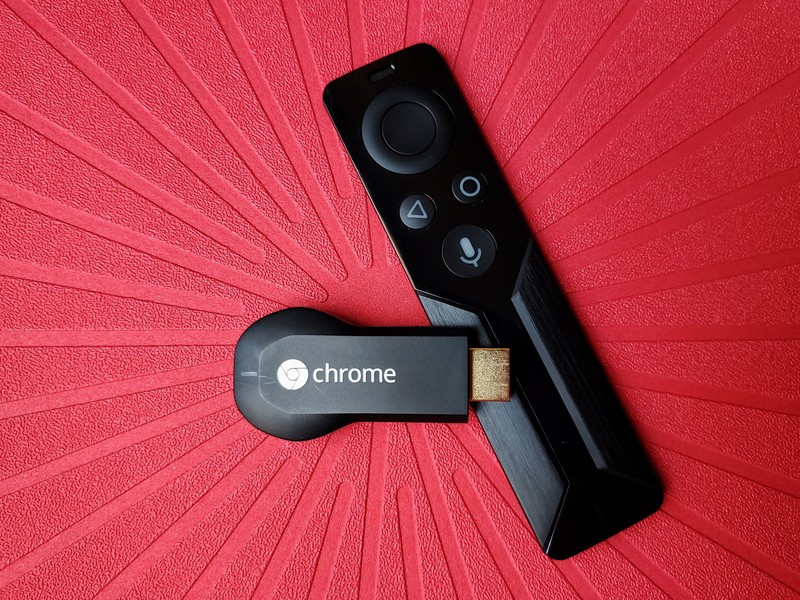Plex: Everything you need to know!

While streaming services like Netflix and Hulu have a healthy catalog of content, they don't have everything. It's also a bummer when the show you've been binging gets removed while you're still watching it. If you want to make sure you'll always have access to your favorite shows and movies, a home media server may be the best option. There are a few different programs that let you run a home media server, but none are as pervasive as Plex.
Here's everything you need to know about Plex!

What's new with Plex?
October 3, 2018 — Plex Web Shows offers unlimited online videos to everyone for free
On top of everything else Plex already offers, the company's now breaking into the world of online streaming video with Plex Web Shows.
Web Shows is a curated selection of high-quality videos from all sorts of brands —including GQ, Engadget, TWiT, Field and Stream, and others with "many more to come."
You can access Web Shows on just about anything (Android, iOS, Android TV, Roku, Amazon Fire TV, etc.) and it's free to use for everyone — no Plex Pass required.
Plex Web Shows is currently in beta and you can start using it right now.
Get the latest news from Android Central, your trusted companion in the world of Android
All the big details
What is it?
At its most basic level, Plex is a program that lets you access your movies, shows and other content from any device, so long as you have access to the Internet. It works in two pieces: at home, your desktop, network attached storage or even your NVIDIA Shield TV stores the files. The Plex Media Server program gets installed, and does the hard work of actually transcoding and pushing your files over the Internet.
The other piece is your smartphone, Chromebook, tablet, game console or streaming stick. Install the Plex application on your device, sign in, and you'll have access to all of your content. Since all the processing is done on your server device, your smartphone or other client just needs a strong Internet connection for your media to play.
What content is supported?

Plex can host movies, TV shows, music, photos and personal videos. Plex also lets you automatically sync photos and videos taken on your phone with your home server, just like you would with Google Photos. Finally, Plex has started offering a curated news service.
How much does it cost?
Plex has two tiers: the free tier and the Plex pass. While other free services may be useless trails, Plex's free tier actually has a robust set of features. The free tier offers:
- Support for nearly any music, photo and video format.
- Access to your content on any supported platform, anywhere you have an Internet connection.
- Customs collections — you could create a collection of superhero movies, for instance.
- Automatic organization of your library, including importing album artwork and DVD covers.
- The aforementioned Plex News service.
- Support for VR headsets.
- Sharing your libraries with friends and family.
- Recommendations based on the shows and movies you've watched.
- Support for as much storage as you're willing to buy.
- Online channels such as NPR, TED Talks and more.
- Chromecast support.
While you can easily get by with the free tier, the Plex Pass offers enticing options such as the ability to download your media for offline viewing, DVR support, Live TV support — though this also requires a compatible antenna — the aforementioned photo syncing and early access to new features.
A Plex Pass costs $5 per month, $40 per year, or $120 for life.
What platforms are supported?

The Plex Media Server can be installed on any Windows, macOS, or Linux desktop; on compatible network attached storage units; on the NETGEAR Nighthawk X10 router; or on the NVIDIA Shield TV.
The Plex client is available for iOS, Apple TV, Android, Android TV, Windows (including Windows 10 Mobile), Xbox One, Xbox 360, PlayStation 4, PlayStation 3, Amazon Fire tablets, Fire TV, Roku, any web browser, and most other smart TV platforms.
What else do you need?

You obviously need some files to stream, and you'll want to make sure they are named correctly{.nofollow}. Your server should be something that stays powered on, like a desktop or your home router.
You'll also want to make sure your router has the Universal Plug-and-Play (UPNP) protocol enabled. This protocol is what Plex uses to make your files available outside your home network. The instructions for turning this on vary from router to router, and some routers don't even offer this feature for security reasons.
Finally, be cognizant of how many people are going to access your server at once. A NVIDIA Shield TV or a NAS unit aren't going to have the power to serve as many video streams as a more powerful desktop would. You'll also need some extra power for the Live TV and DVR features.
More: Your whole family will appreciate a home media server
What say you?
Do you use Plex for your media server needs? Let us know down below!

